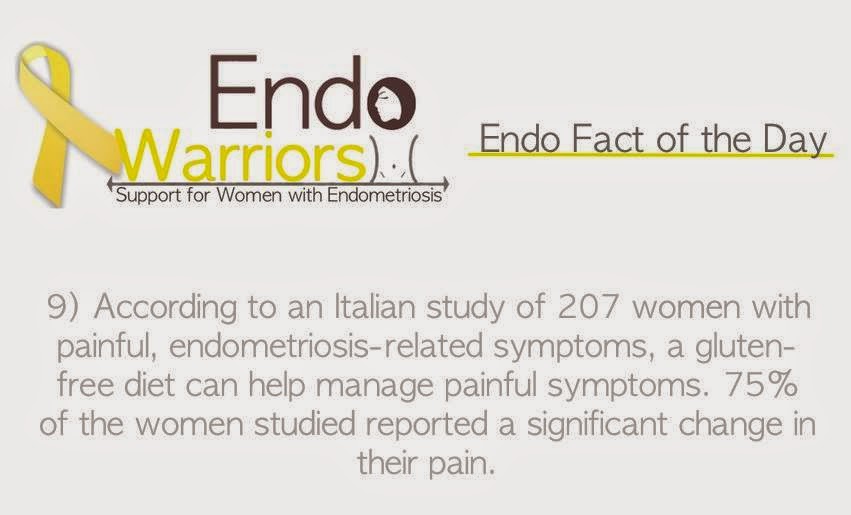"RESULT(S): Pain-conducting substance-P-positive nerve fibers were found to be directly colocalized with human peritoneal endometriotic lesions in 74.5% of all cases. The endometriosis-associated nerve fibers are accompanied by immature blood vessels within the stroma. Nerve growth factor and neutrophin-3 are expressed by endometriotic cells. Growth-associated protein 43, a marker of neural outgrowth and regeneration, is expressed in endometriosis-associated nerve fibers but not in existing peritoneal nerves. CONCLUSION(S): The data provide the first evidence of direct contact between sensory nerve fibers and peritoneal endometriotic lesions. This implies that the fibers play an important role in the etiology of endometriosis-associated pelvic pain. Moreover, emerging evidence suggests that peritoneal endometriotic cells exhibit neurotrophic properties." http://www.ncbi.nlm.nih.gov/pubmed/17412328
"RESULT(S): Peritoneal endometriosis-associated nerve fibers were found significantly more frequently in group A than in group B (82.6% vs. 33.3%). CONCLUSION(S): The present study suggests that the presence of endometriosis-associated nerve fibers in the peritoneum is important for the development of endometriosis-associated pelvic pain and dysmenorrhea." http://www.ncbi.nlm.nih.gov/pubmed/18980761
"RESULT(S): Lesions from the rectovaginal septum were significantly more likely to be associated with a nerve fiber and report more menstrual pain than lesions from other regions. The PF glycodelin concentrations were also significantly higher in samples with an endometriotic-associated nerve. In peritoneal endometriotic lesions significantly more menstrual pain was reported when endometriotic lesions were associated with nerve fibers, although no difference was observed between the cytokine concentrations. Ovarian endometriotic lesions were rarely associated with nerve fibers.
The presence of endometriosis-associated nerve fibers appear to be related to both the pain experienced by women with endometriosis and the concentration of PF cytokines; however, this association varies with the lesion location." http://www.ncbi.nlm.nih.gov/pubmed/22154765
"There was no difference in the density of nerve fibers across the menstrual cycle in peritoneal endometriotic lesions. These findings may explain why patients with peritoneal endometriosis often have painful symptoms throughout the menstrual cycle." http://www.ncbi.nlm.nih.gov/pubmed/21334610
"Progestogens and combined oral contraceptives reduced nerve fiber density and nerve growth factor and nerve growth factor receptor p75 expression in peritoneal endometriotic lesions." http://www.ncbi.nlm.nih.gov/pubmed/18976764
"Pain generation in EM is an intricate interplay of several factors such as the endometriotic lesions themselves and the pain-mediating substances, nerve fibres and cytokine-releasing immune cells such as macrophages. These interactions seem to induce a neurogenic inflammatory process. Recently published data demonstrated an increased peptidergic and decreased noradrenergic nerve fibre density in peritoneal lesions. These data could be substantiated by in vitro analyses demonstrating that the peritoneal fluids of patients suffering from EM induced an enhanced sprouting of sensory neurites from chicken dorsal root ganglia and decreased neurite outgrowth from sympathetic ganglia. These findings might be directly involved in the perpetuation of inflammation and pain. Furthermore, the evidence of EM-associated smooth muscle-like cells seems another important factor in pain generation. The peritoneal endometriotic lesion leads to reactions in the surrounding tissue and, therefore, is larger than generally believed. The identification of EM-associated nerve fibres and smooth muscle-like cells fuel discussions on the mechanisms of pain generation in EM, and may present new targets for innovative treatments." http://www.ncbi.nlm.nih.gov/pubmed/24590000
"We could detect an increased sensory and decreased sympathetic nerve fibres density in peritoneal lesions compared to healthy peritoneum. Peritoneal fluids of patients with endometriosis compared to patients without endometriosis induced an increased sprouting of sensory neurites from DRG and decreased neurite outgrowth from sympathetic ganglia. In conclusion, this study demonstrates an imbalance between sympathetic and sensory nerve fibres in peritoneal endometriosis, as well as an altered modulation of peritoneal fluids from patients with endometriosis on sympathetic and sensory innervation which might directly be involved in the maintenance of inflammation and pain." http://www.ncbi.nlm.nih.gov/pubmed/21888965




















